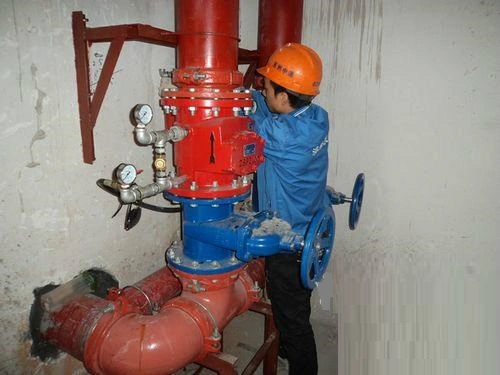First, the valve body may leak.
Reasons
1.Blisters or cracks are on the valve body;
2.The valve body was cracked during welding;
Treatments
1 Polishing the suspected crack and etch it with 4% nitric acid solution. If crack exists, it will be displayed;
2 Digging and mending the crack parts;
Second, the valve stem and its mating thread are damaged ,the stem top is broken or stem is bent.
Reasons
1. Improper operation, excessive force when opeing and shutting, failure of the limit device, and over-torque protection;
2. Thread is too loose or too tight;
3. Too many operations or the valve is used for too long time;
Treatments
1. To operate properly and use appropriate force; check the limit device and over-torque protection device;
2. Select the appropriate material. When assembling, the tolerances shall meet the requirements;
3. Replace spare parts;
Third, the joint between bonnet and body leaks.
Reasons
1. The bolt is not tight enough or tightly biased;
2. The gasket does not meet the requirements or the gasket is damaged;
3. The joint surface is defective;
Treatments
1. Retighten the bolts;
2. Replace the gasket;
3. Disassemble the valve and inspect the joint surface;
Fourth, the valve inside leaks.
Reasons
1. valve is not closed tightly;
2. The joint surface is damaged;
3. The gap between valve stem and valve core is too large, causing valve core dipped or contact poorly;
4. Poor sealing material or valve cartridge jam;
Treatments
1. re-open or close;
2. Disassembling the valve, and re-grinding valve core and sealing surface;
3. Adjust the gap between the valve core and stem or replace valve core;
4. The valve is disintegrated to eliminate the jam;
5. Re-replace or weld the seal ring;
Fifth,the valve stem is separated from the valve core, causing the malfunction.
Reasons
1. improper repairing;
2. The joint between the valve core and the valve stem is corroded;
3. Use too large force to open or close, causing the joint between valve core and stem damaged;
4. The retaining washer is loose and the joint is worn;
Treatments:
1. Pay attention during maintenance;
2. Replace the core and stem with corrosion resistant material;
3. Operate properly;
4. Check and replace damaged spare parts;
Sixth, there are cracks on the valve core or seat
Reasons
1. the welding on joint surface is poor;
2. The temperature difference between valve sides is large.
Treatments
Repair welding with cracks, heat treatment according to regulations, maching and grinding.
Seventh, valve stem does not move up or down.
Reasons
1. In the cold state, the valve is too tight to be swollen after being heated or too tight after being fully opened;
2. The packing is pressed too tightly;
3. The valve stem clearance is too small to swell;
4. The valve stem and nut are too tightly matched, or the threaded fastener is damaged;
5. Packing gland is deviated;
6. The stem is bent;
7. The medium temperature is too high, the lubrication is poor, or the valve stem is seriously rusted.
Treatments
1. After heating the valve body, slowly test it with force or open it tightly and then close it slightly;
2. Slightly loose the packing, then try to open;
3. Appropriately increase the valve stem clearance;
4. Replace the valve stem and the nut;
5. Re-adjust the bolts on packing gland;
6. Straighten valve stem or replace it;
7. Use pure graphite powder as a lubricant on stem;
Eighth, the packing leaks.
Reasons
1. The packing material is incorrect;
2. The packing gland is not pressed tight or biased;
3. The method of adding packing is wrong;
4. the stem surface is damaged;
Treatments
1. Use the correct packing material;
2. Check and adjust the packing gland to avoid any deviation;
3. Fill the packing properly;
4. Repair or replace the valve stem;

